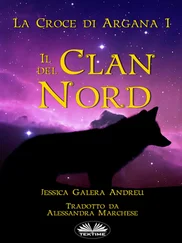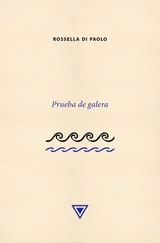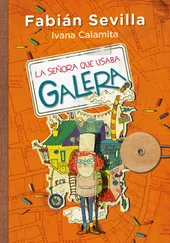He thanks him for the shelter and the maté and apologizes for not being able to offer anything in return. Duck leans forward and whispers.
Don’t say anything, ’cause I don’t want Val to know. If we see you again and she accuses you of stealing this, don’t deny it.
Duck hands him a battery-operated flashlight.
I can’t accept this.
Bring it back to me later tonight or tomorrow.
I owe you one.
Sure you don’t want to go first thing in the morning?
I’ve got to go now.
He shakes Duck’s hand and calls Beta, who is already sleeping. He covers his head with his hood and leaves. The rain is thick and warm. His feet sink into the mud. He uses the flashlight to find his way out of the woods and guide himself along the trail, which soon disappears down a slope covered with low grasses. Beyond the light of the flashlight, the darkness is complete, but a sense of his bearings gives him an approximate notion of where the trees, rocks, valley, abyss, and ocean are. Occasional flashes of lightning offer snapshots of the diluvial landscape.
The valley ends in the miniature beach of rocks that Duck told him about. All the rain has turned the creek into a small river, and it takes him a while to find a place to cross. He wades the two to three yards from one side to the other, through the current, with the water above his waist, flashlight in his mouth, hugging the dog to his chest. The most accessible path through the other side of the valley must be obvious during the day but requires careful exploration in the dark. He retraces his steps and gets his bearings again every time he finds a steep slope or dense forest blocking his way. When he is beginning to suspect that he is searching in vain, he sees the barbed-wire fence. He continues groping the fence with his right hand for a few minutes until he comes to the rusty gate of barbed wire. A quick inspection with the flashlight reveals that it is easier to open than he had thought. He releases one of the stakes from a loop of nylon rope, and the gate lies down docilely on the drenched ground.
For a few yards the path is no more than an almost indistinguishable opening in the middle of dense forest. Then suddenly a carefully tended dirt trail becomes visible in the beam of the flashlight. The grass on either side appears to have been trimmed recently, and the surface is firm and smooth even after weeks of rain. It starts to climb the slope, snaking around rocks, which at one point form a continuous wall on his left. He passes his hand along the slimy stone, leaning into its comforting solidity. Beta stays at his heel, sniffing. He realizes that the wild vegetation has begun to show signs of landscaping. He notices strips of well-tended grass and bromeliads fastened with wire to the trunks of trees that bend over the trail like arches.
A natural staircase, with steps molded by roots, appears, and after another abrupt curve around a rock, he comes face to face with a large rectangular aquarium at the side of the trail. He approaches it and points the flashlight. Inside the glass box are several stone, clay, and ceramic chips arranged as if they were in a museum display case. The curved lines of many of the fragments suggest that they are pieces of statues, vases, or old plates. Some have inscriptions in unknown characters or patterns of triangles and diamonds. In one corner of the aquarium are half a dozen arrow tips similar to the ones he found in his first few days of walking. The lid of the aquarium is well sealed, and the very white sand at the bottom preserves a dryness that seems extinct in the world.
A little farther along, the trail is suddenly interrupted by a large boulder. Looking closer, he sees that there is a low passage under the boulder, low enough to force a man to stoop. Around this opening is a small bamboo portal. He stands there listening for a time, but all he hears is rain. He turns off the flashlight. A very tenuous, almost undetectable light leaks through the opening. He stoops and enters.
He stands up inside a kind of rocky antechamber weakly lit by the same light he could see from the trail. On his right is a natural opening invaded by the branches of a tree and partially covered with a wavy sheet of asbestos. A narrow vertical opening leads to another section of the cave. He turns on the flashlight and shines it around a little. At the back is a large turtle shell.
The dog finally decides to enter and, after adjusting to her new surroundings for a few moments, starts to growl. He shines the flashlight on the opening, turns, and passes through it with two sideways steps.
The old man is facing him, watching, sitting on what appears to be an old rocking chair covered with sheepskins, his arms lying on the armrests. The light of a gas lantern hanging on a rock wall immediately reveals the size of the cave but hides its details in the shadows. The old man’s gray beard hangs halfway down his chest. He still has a few strands of white hair on the sides of his head. He has a broad face, narrow nose, and deep-set eyes. He is a tall man who has shrunk. His faded and tattered pants, vest, and wool jacket must have been elegant when new. The intensity of his cadaverlike figure is reinforced by the presence of a young mulatto woman, who can’t be any more than twenty years old, sitting on a stool close to him, slightly behind the rocking chair. She is wearing a kind of knitted robe in a sandy tone and a diamond tiara that can only be a plastic imitation of the real thing. One of her arms is resting lightly on the old man’s shoulder. The two of them stare at the intruder with the same stony gleam in their eyes.
Good evening, he says, pushing back his hood.
The old man turns his head a little like a curious dog and wrinkles his forehead. His bushy eyebrows are gray like his beard, and his skin looks like a leather bag with centuries of use.
The woman’s eyes widen suddenly, and she looks frightened. She whispers something in the old man’s ear, and he raises his right hand to the height of her face, requesting silence. Then he whispers something in her ear. She gets up, takes a few steps to a dark recess toward the back of the cave, and speaks to someone.
The roof of the cave is an enormous slab of slanting rock that is some ten feet at its highest point and almost touches the ground at its lowest. The cave is dry and warm, and there is a blue tarpaulin sealing an upper corner. Near him, an upright log serves as a table for a perfect sphere of granite about the size of a soccer ball. A flash of lightning reveals two openings, one on his right that leads into the forest, and another behind him, which he figures is the direction of the valley and ocean, but the two or three flares of light that are gone in an instant are not enough for him to identify the third person that the woman just spoke to. The cave dwelling has a clean, mineral smell. He can’t detect the smell of people living there. A puddle of water is forming at his feet.
I’m sorry, I’m getting everything wet.
The old man leans forward slightly and summons him closer with his index finger. The rocking chair creaks. He can hear Beta growling in the antechamber. She must be afraid to squeeze through the opening.
He walks three steps closer to the old man. Behind him and the mulatto woman, a girl of about thirteen, with white skin, tangled black hair and a feral look, gets up. She stares at him with uneducated eyes as she listens to instructions muttered by the woman. In the recess from which she has just risen, he can now see another girl, blond and bigger than the first, curled up on a bed of mats and cushions. She has just woken up and rubs her eyes, trying to understand what is going on. The mulatto woman returns to exactly the same position on the stool by the old man, her smooth arm touching his shoulder like a dancing partner’s. Her nails are manicured. The wild-looking girl who has just risen goes farther back into the cave to a tiny kitchen, where there are shelves laden with jars and tins and a hotplate perched over a wood-fired oven of stone. The orange and violet embers are still lightly pulsing. She places a teapot on the hotplate.
Читать дальше












